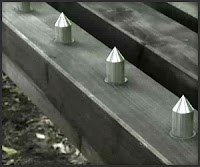Old DNA Reveals New Findings For Koala Disease
The koala retrovirus (KoRV) is well documented to have troubled the koalas' community for long time. Recently researchers Alex Greenwood and Alfred Roca commissioned a study of their DNA using skin samples from koalas kept in USA and European museums. And the analysis revealed that this retrovirus problem may have persisted for far longer period that we have imagined. Greenwood is based in Berlin's Leibniz Institute for Zoo and Wildlife Research (LZW) and Roca is an assistant professor in animal sciences at the University of Illinois.
The confirmation of this retrovirus on museum samples suggested it has invaded the host system for generations. The consequences are dire as the attacks seemed quite drawn out and it is normal to assume that the subsequent generations have suffered its strong pathological effects.
One example of retroviruses is HIV (or human immunodeficiency) virus. These viruses are able to transcribe RNA into DNA that is then incorporated into the host cell. When the attack spreads to the host's germ line (cells that carry genetic materials, examples are sperm and eggs), the disease would affect the offspring that follows.
Our knowledge about retrovirus is not extensive. This KoRV is in fact the only type known to affect a germ line of animal population. For northern Australia, close to all koalas there have endogenous (inherent integration with the host) KoRV. But an interesting situation is observed in the south, as only very small portion of koalas are affected, likely the retrovirus is not as widespread or it is a young virus.
Image [Click to enlarge]
It is the goal of both Greenhood and Roca that their study could lead to discovery on how the attachment of a retrovirus onto the germ line could take place. There are also external collaborations involving researchers from Copenhagen and Berlin and Copenhagen who specialize in ancient DNA. These experts are helped by cutting edge laboratories/facilities to decode genetic materials out of ancient and/or less-than-perfect samples that are really too small for general research.
A total of 28 museum koalas were used for this experiment, stretching from late 19th century to 1980s. Sequencing of mitochondrial DNA was then carried out on 18 of the koalas pool. They were stumped when they realize 15 out of the 18 samples are positive for KoRV.
The team has expected to find less incidents of KoRV in the samples that went a far way back and that more recent samples would show up hints of the progression in KoRV, ideally a chain of events which marks its transmission from an infectious virus to being an integral part of the germ line.
Two samples which tested negative against KoRV were hailed from southern Australia. All the 15 KoRV positive samples came from northern Australia. This finding shows tremendous similarity on recent study conducted to determine the geographic spread of KoRV.
Image [Click to enlarge]
One other finding was that KoRV seem to have reached stable state as the sequencing is just about the same across old and new samples. This revealed that the retrovirus has stabilized as far back as 120 years, and by the late 1800, their presence has been well established in northern Australia. It then spreads at a much slower pace, likely because of sedentary nature of koalas.
The initial conclusion is that this presence of KoRV has made koalas more prone to a number of diseases, like leukemia and Chlamydia, over the last century and more. In 1887 – 1889, there have been diseases reported which exhibit similar symptoms to those of Chlamydia, and it wiped away millions of koalas from Australia surface.





Comments
Post a Comment